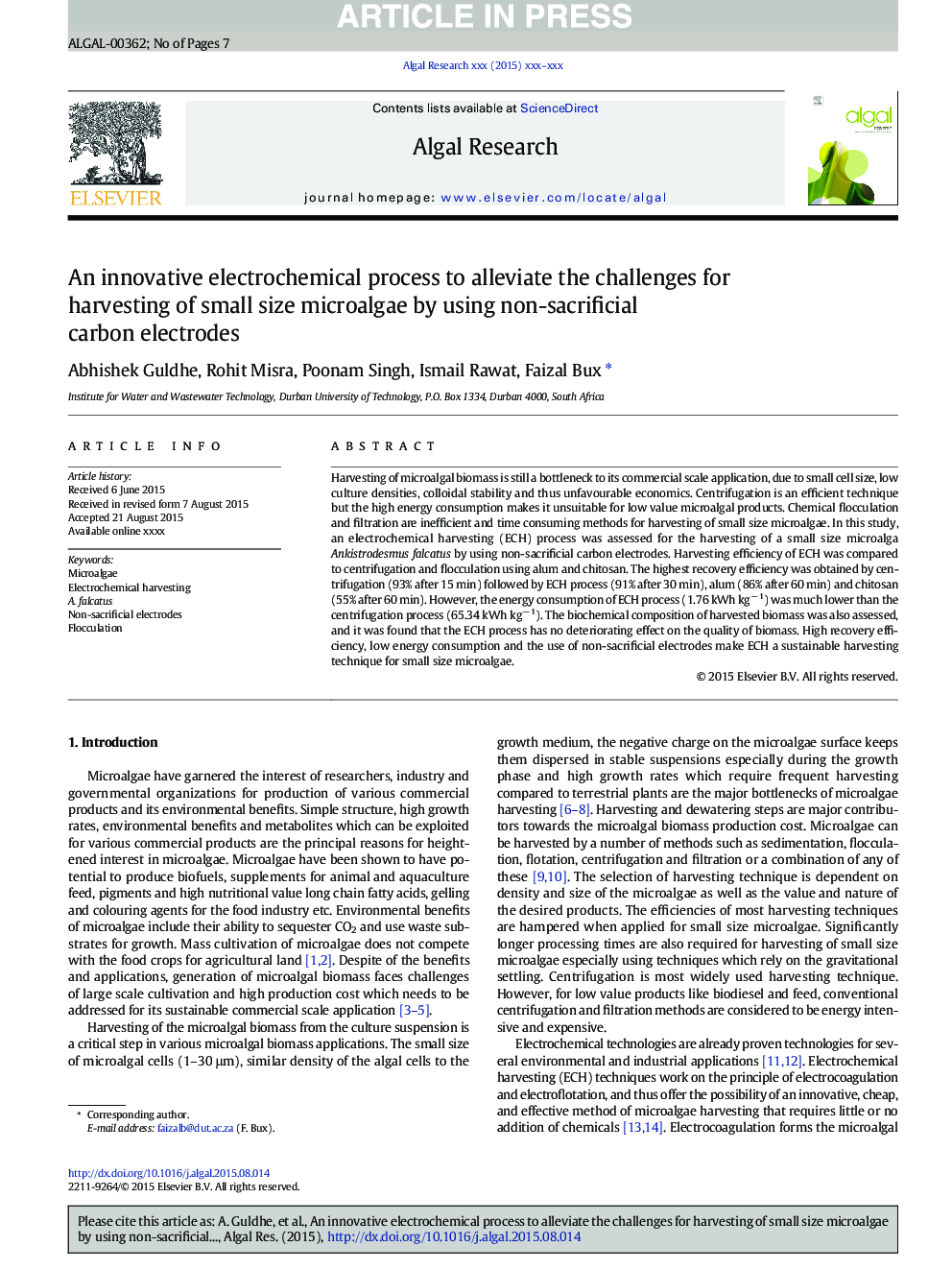| Article ID | Journal | Published Year | Pages | File Type |
|---|---|---|---|---|
| 8086389 | Algal Research | 2016 | 7 Pages |
Abstract
Harvesting of microalgal biomass is still a bottleneck to its commercial scale application, due to small cell size, low culture densities, colloidal stability and thus unfavourable economics. Centrifugation is an efficient technique but the high energy consumption makes it unsuitable for low value microalgal products. Chemical flocculation and filtration are inefficient and time consuming methods for harvesting of small size microalgae. In this study, an electrochemical harvesting (ECH) process was assessed for the harvesting of a small size microalga Ankistrodesmus falcatus by using non-sacrificial carbon electrodes. Harvesting efficiency of ECH was compared to centrifugation and flocculation using alum and chitosan. The highest recovery efficiency was obtained by centrifugation (93% after 15 min) followed by ECH process (91% after 30 min), alum (86% after 60 min) and chitosan (55% after 60 min). However, the energy consumption of ECH process (1.76 kWh kgâ 1) was much lower than the centrifugation process (65.34 kWh kgâ 1). The biochemical composition of harvested biomass was also assessed, and it was found that the ECH process has no deteriorating effect on the quality of biomass. High recovery efficiency, low energy consumption and the use of non-sacrificial electrodes make ECH a sustainable harvesting technique for small size microalgae.
Keywords
Related Topics
Physical Sciences and Engineering
Energy
Renewable Energy, Sustainability and the Environment
Authors
Abhishek Guldhe, Rohit Misra, Poonam Singh, Ismail Rawat, Faizal Bux,
